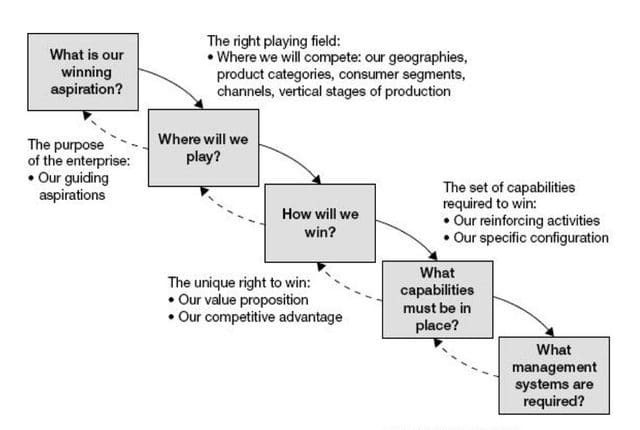How Strategy Really Works
How Strategy Really Works: The 1993 HBR article ‘Customer Intimacy and Other Value Disciplines’ argued that every company had to become champions of one of three value disciplines — operational excellence, customer intimacy, or product leadership. Since that book was published, virtually every business meeting I’ve been in has used at least one of these phrases to describe strategy. Value disciplines are treated as if they were gospel.
In the recently-published book ‘Playing to Win: How Strategy Really Works’, authors A.G. Lafley and Roger L. Martin question these long-held beliefs:
These [value disciplines] sound like good ideas, but if they don’t translate into a genuinely lower cost structure or higher prices from customers, they aren’t really strategies worth having.
The authors have plenty of street cred to back up their point of view. Lafley is Chairman and CEO of Procter & Gamble while Martin is Dean of Rotman School of Management in Toronto.
‘How Strategy Really Works’ may be the best business and strategy book I’ve read since Michael Porter. There is plenty of practical advice, including the fact that business people often confuse a vision for a strategy. Instead, the authors claim “winning through distinctive choices is the always-and-forever job of every strategist.”
To make this point, Lafley and Martin explore the strategy of becoming the low-cost leader in a market. They point out companies cannot be a cost leader by producing products or services exactly as their competitors do (operational efficiency is not enough). What’s more, becoming a low-cost leader doesn’t necessarily mean the company should charge the lowest prices:
Low-cost leaders have the option of underpricing competitors, but can also reinvest the margin differential in ways that create competitive advantage.
For example, 30 years ago Mars created its line of candy bars so they all could be produced on the same super-high-speed production line. In addition, the company decided to use lower-cost ingredients than its competitors. These decisions dramatically reduced their product cost compared to its competitors with multiple production lines and more expensive ingredients.
Instead of selling its candy bars at lower prices, Mars chose to buy the best shelf space in every convenience store in America. Even though Hershey’s was a much larger company than Mars, its higher product costs meant it couldn’t afford to counter this strategy. As a result, Mars grew from a small player to Hershey’s main rival with similar market share.
Now that was a successful strategy.
Please follow me on Twitter, LinkedIn, and Google+.
This blog was originally posted on Manage By Walking Around on September 15, 2013
New NetWeaver Information at SAP.com
Very Helpfull
